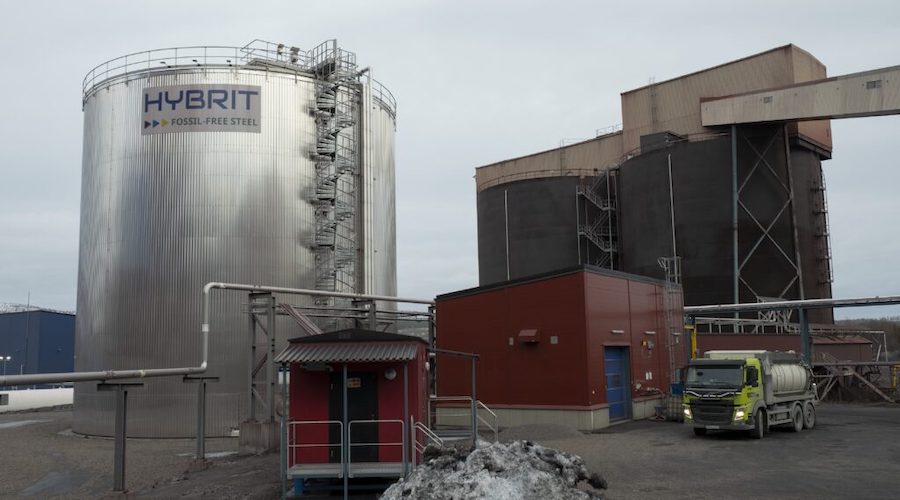
The world’s first fossil-free steel plant, Hybrit, will be fueled by hydrogen, companies behind the enterprise announced.
Swedish steelmaker SSAB, iron-ore miner LKAB and utility Vattenfall are the protagonists of the joint venture and have already started building a 28.9-million rock cavern storage facility for fossil-free hydrogen gas on a pilot-scale next to Hybrit’s pilot plant for direct reduction in Luleå, northern Sweden. Hydrogen storage compression will be supplied by Scottish provider Howden.
The rock cavern, whose walls are covered with a sealing layer, will allow for the storage of 100 cubic metres of hydrogen and is being built approximately 30 metres below ground. The technology used is adapted to Scandinavian bedrock conditions and is expected to be developed further to handle the storage of hydrogen.
The rock cavern storage facility being built in Luleå will allow for the storage of 100 cubic metres of hydrogen
“Fossil-free hydrogen, which will replace coal and coke, is a crucial part of the production technique for fossil-free iron and steel production, where emissions of carbon dioxide will be virtually eliminated,” Andreas Regnell, head of strategy at Vattenfall and chairman of the board at Hybrit, said in a media statement.
“Storage provides the opportunity to vary demand for electricity and stabilise the energy system by producing hydrogen when there’s a lot of electricity, for example in windy conditions, and to use stored hydrogen when the electricity system is under strain.”
Hybrit’s pilot facility for the production of fossil-free sponge iron in Luleå was commissioned in August 2020 and in March 2021, Gällivare was chosen as the location for the planned demonstration facility for industrial scale production.
The idea behind the project is to produce fossil-free pellets, fossil-free electricity and hydrogen, which involves eliminating carbon dioxide emissions from the process by using fossil-free input materials and energy across all parts of the value chain.
To produce pellets, Hybrit has supplied LKAB’s existing plant in Malmberget, northern Sweden, with a special tank for bio oil as well as associated piping systems, making it the world’s first fossil-free pellet plant. The goal is to switch to 100% renewable fuel.
Trials with other alternative heating techniques are also being carried out, such as hydrogen combustion and electric heating technology.
At the pilot plant in Luleå, on the other hand, tests to reduce iron ore pellets using hydrogen are being conducted and will be running up until 2024. The plant has a direct reduction shaft, where the reduction takes place, and a number of electrolyzers for the production of hydrogen using fossil-free electricity.
Direct reduction means that iron ore is reduced to a porous, solid product of pure metallic iron – sponge iron – at temperatures below the melting point of the iron. The reduction involves removing the oxygen from the iron ore, which is a prerequisite for steel production. In a traditional process, this is done using carbon or coke, while in the Hybrit process the reduction is done using fossil-free hydrogen.
When it comes to smelting, Hybrid is conducting pilot-scale trials in collaboration with Swerim in Luleå. The goal is to smelt sponge iron in an electric arc furnace in the form of direct reduced iron (DRI) and hot briquetted iron (HBI).